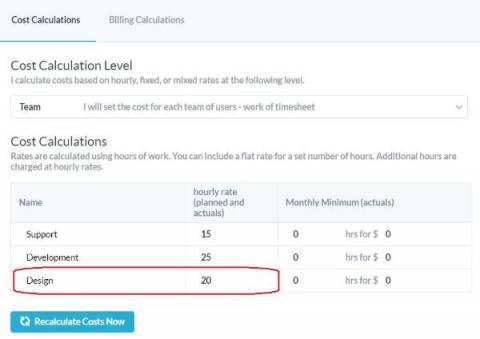Manage your Costs and Billing with OneDesk
Budget monitoring is a key aspect to successful project management. The new financials app in OneDesk allows you to easily estimate, forecast and monitor your company’s budget. Regardless of the size of your team, or how you bill your customers, the financials app offers flexibility to set costs and keep track of your company’s finances in real time.











